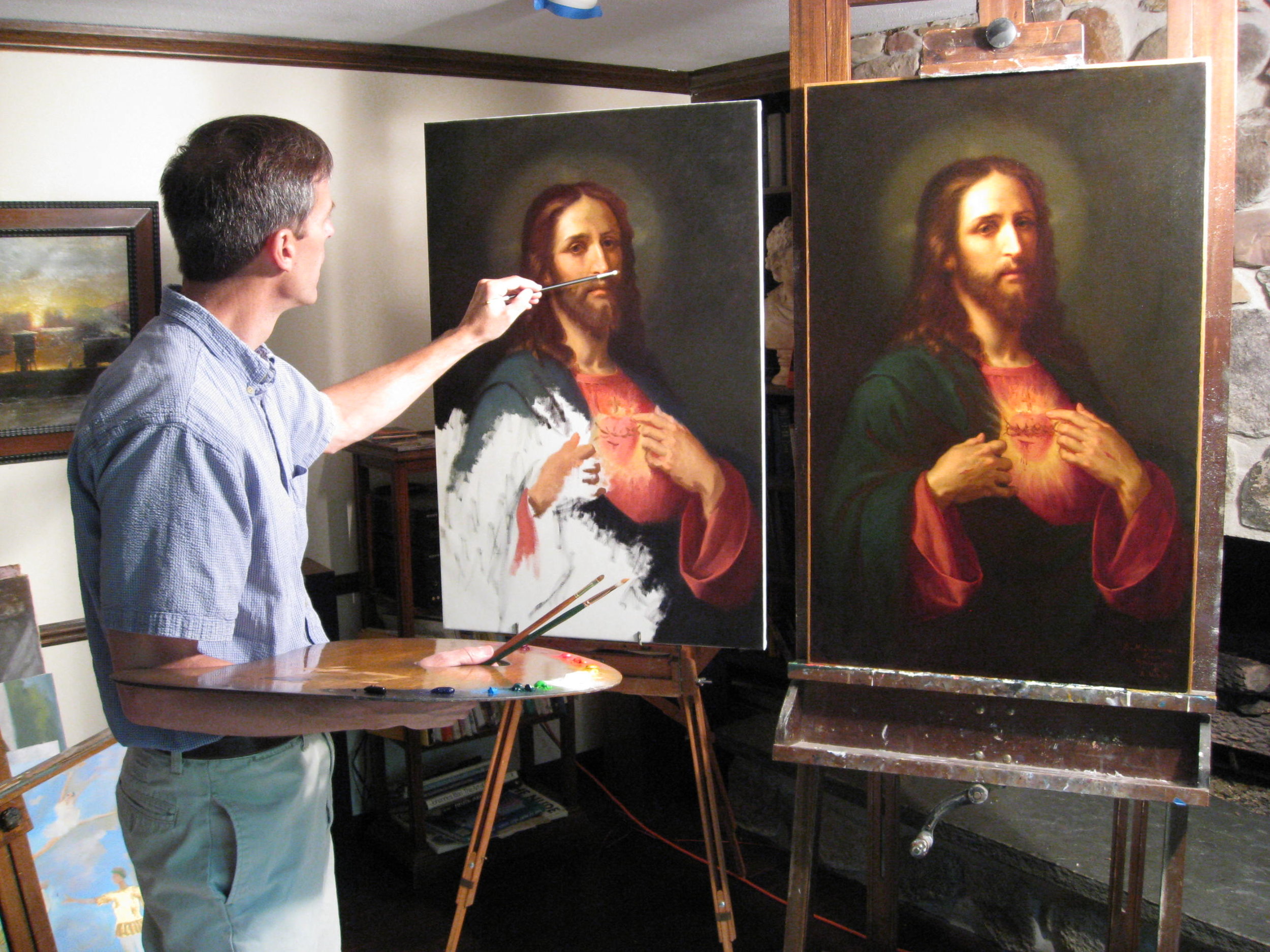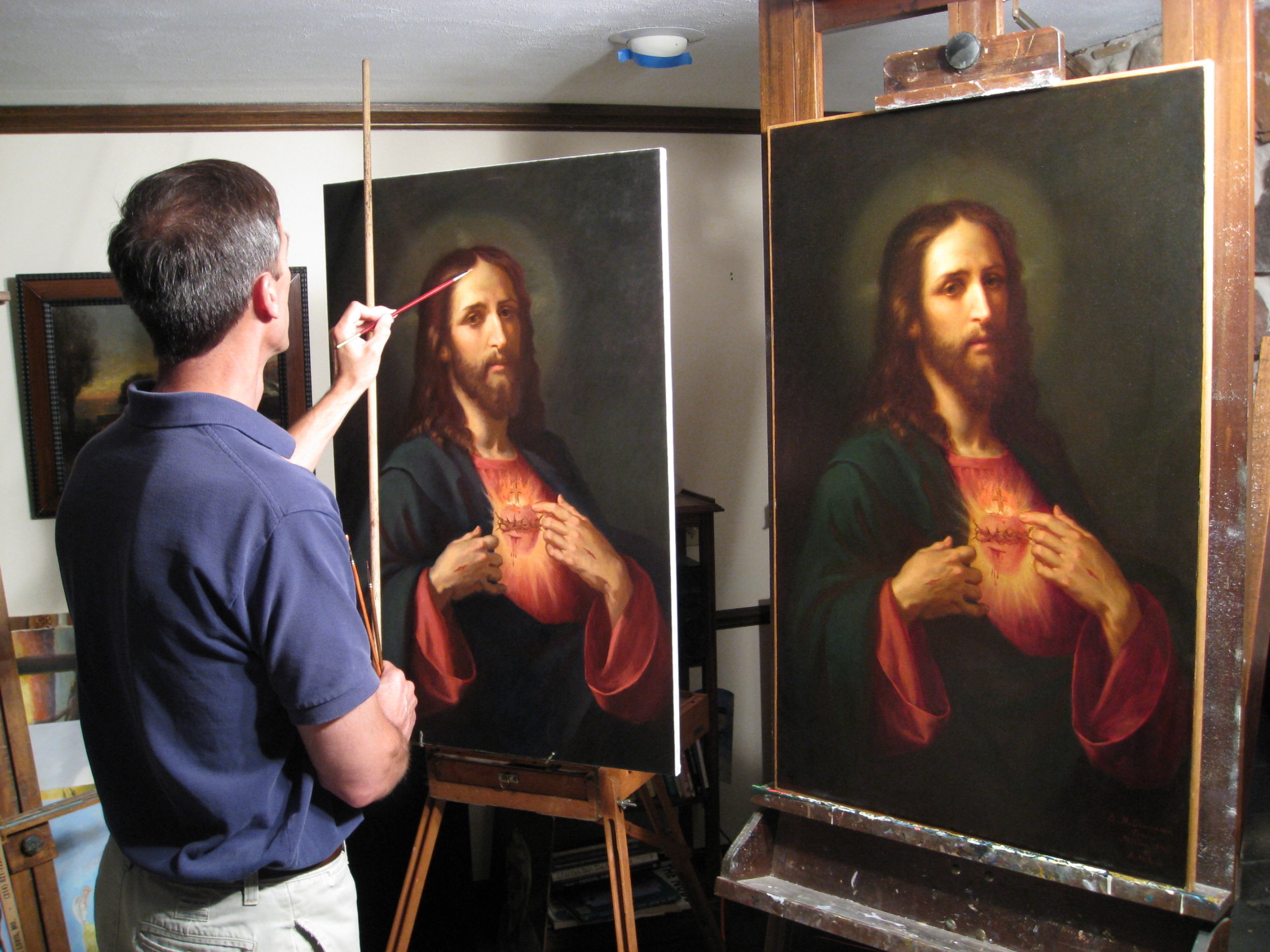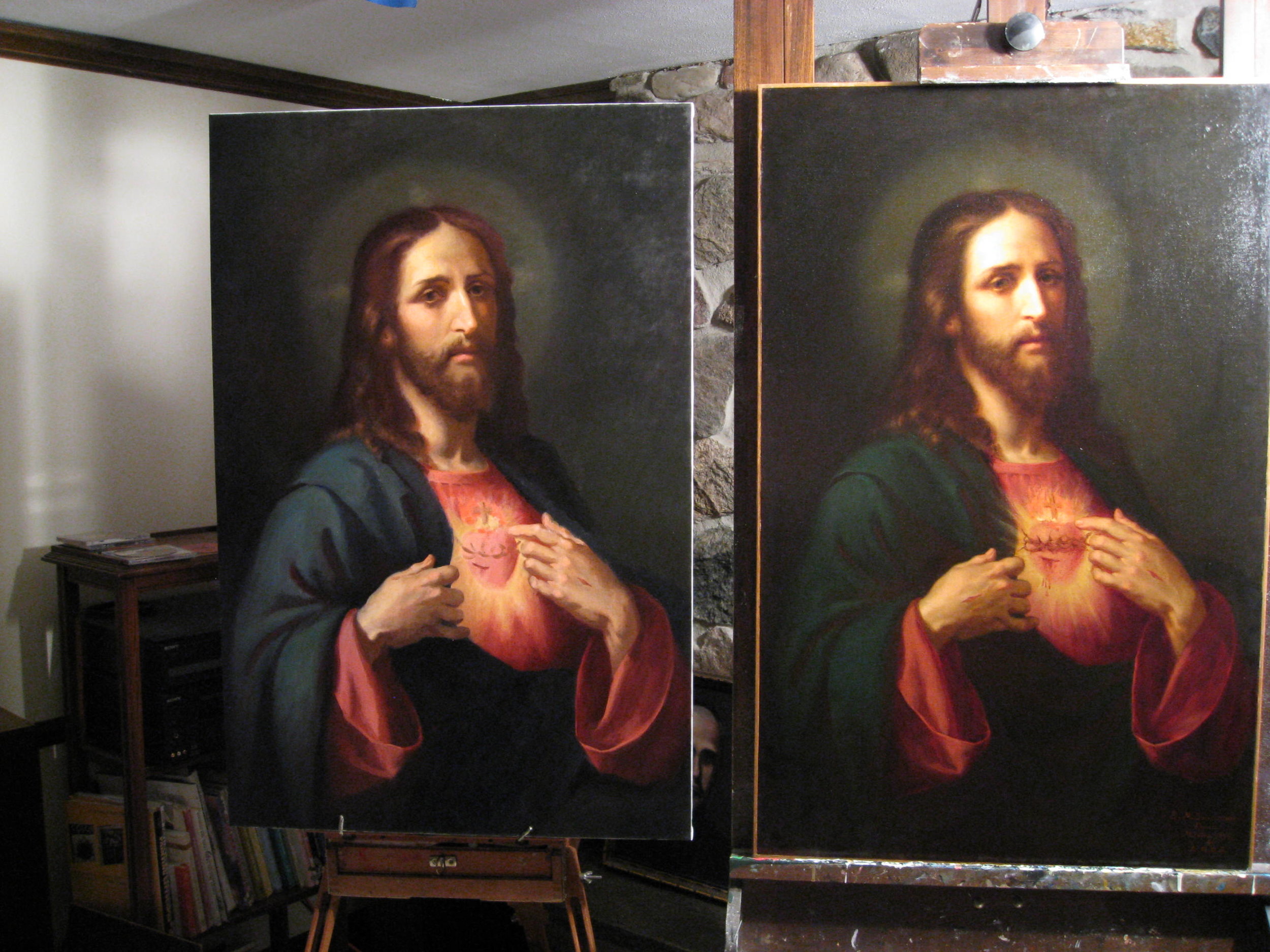 The painting of the Sacred Heart shown is painted by the Virginia-based Catholic artist, Henry Wingate. The process by which it was commissioned and painted is worth recounting as it demonstrates a number of principles.
Last February I was contacted several months ago by John Fitzpatrick, a seminarian at the Kenrick Seminary in St Louis, who has seen me speak there a couple of months before. He wanted to know if I could recommend an artist who produce a painting based upon his favourite image of the Sacred Heart of Jesus by the 19th century Mexican artist Jose Maria Ibarraran y Ponce. I recommended that he contacted Henry and passed on the contact details.
The painting of the Sacred Heart shown is painted by the Virginia-based Catholic artist, Henry Wingate. The process by which it was commissioned and painted is worth recounting as it demonstrates a number of principles.
Last February I was contacted several months ago by John Fitzpatrick, a seminarian at the Kenrick Seminary in St Louis, who has seen me speak there a couple of months before. He wanted to know if I could recommend an artist who produce a painting based upon his favourite image of the Sacred Heart of Jesus by the 19th century Mexican artist Jose Maria Ibarraran y Ponce. I recommended that he contacted Henry and passed on the contact details.
I had forgotten all about this until Henry arrived to teach at the summer Way of Beauty Atelier at Thomas More College in New Hampshire, this summer. He had with him the finished piece of work., which was put on show at the college for the duration of the class.
He told me about how it had worked: he wanted to do the commission but was adamant that if at all possible he wanted to work from the original. After a bit of research he found out that the original was owned by David Pappas, a collector who lives in Minnesota. He loves the image and was very happy to make it available for copying. So Henry flew out to Minnesota and copied it there. I show some photographs of the work in progress, next to the original.
I spoke to Mr Pappas who was delighted to have met Henry and to have been helpful in the project. He told me that he enjoyed meeting Henry very much. He told me a little bit about the original. As far as he knows this is the only extant work or the artist, who was the director of Royal Academy of Fine Arts in Mexico City around the turn of the last century. It was commissioned by members of the Miller brewing family, who were Catholics and devoted to the Sacred Heart and completed in 1896.
 In my opinion it is a wonderful painting (the original is shown right). Although from the 19th century, it has a 17th century feel. The restraint in the use of colour and his careful control of focus is typical of the earlier period (as many NLM readers will have heard me describe before). Also, he has played down the features of the face by putting them partially in shadow. This way he has avoided that look of a portrait of the boy next door in historical costume (which we see in so much 19th-century and modern naturalistic sacred art).
In my opinion it is a wonderful painting (the original is shown right). Although from the 19th century, it has a 17th century feel. The restraint in the use of colour and his careful control of focus is typical of the earlier period (as many NLM readers will have heard me describe before). Also, he has played down the features of the face by putting them partially in shadow. This way he has avoided that look of a portrait of the boy next door in historical costume (which we see in so much 19th-century and modern naturalistic sacred art).
This process emphasizes the importance of copying the works of Masters in the preservation and transmission of any tradition. Traditionally, the training of artists always included the copying (with understanding) of the works of Masters – Sargent for example, went to Madrid and copied every Velazquez he could see. This is not to devalue the end product. Just as the copying of icons allows for the creation of a new icon worthy of veneration, so Henry has created an work of art, itself worthy of veneration (once the name is placed on it, of course, in accordance with the theology of Theodore the Studite).
John Fitpatrick was delighted with the result: “I am very happy with the finished painting. I was interested in this project for reasons: I have a personal devotion to the Sacred Heart and this is my favourite image. Ideally, the painting will hang somewhere in my living quarters when all's said and done, maybe even adorning an altar.
“I'm also very glad to hear you're doing a piece on the commissioning process.” He told me. “I think clerics today--as well as laymen--don't realize that direct commissioning of an artist to create worthy art for sacred use is even possible and so it is good for this to be made known. I also think it's important to remember that it is through the commissioning of artists that all the great works of sacred art came about, but that they were not cheap; when commissioning artists, we have to be ready to bleed a little bit for the product.”
High quality reproductions of the original are available from David Pappas at his gallery Strawberry Hill Ltd. Also, the original is for sale. Thomas More College of Liberal Arts is dedicated to the Sacred of Jesus and so if any readers feel inclined to buy it and donate it to the college, we would be happy to entertain approaches!





